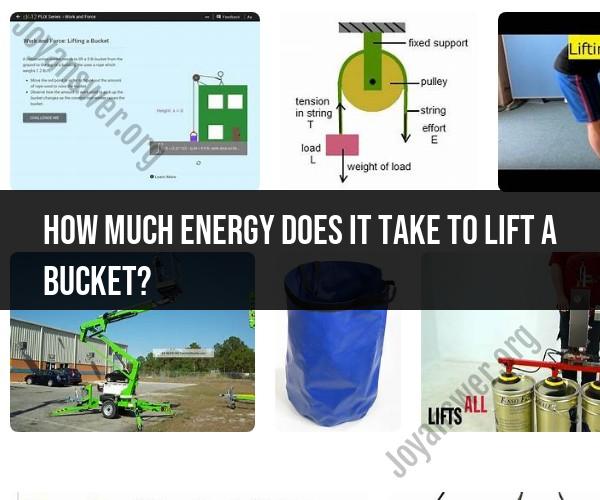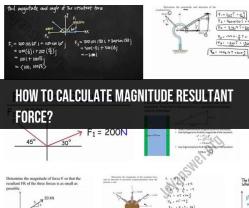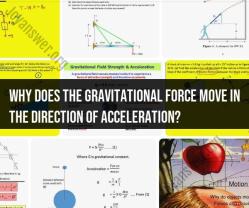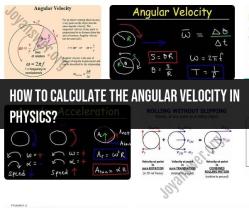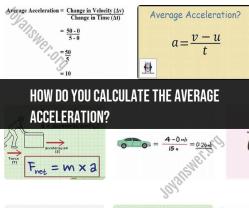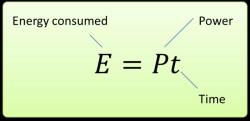How much energy does it take to lift a bucket?
The amount of energy required to lift a bucket depends on several factors, including the mass of the bucket, the height it is lifted, and the force of gravity. To calculate the energy required, you can use the following basic physics principles:
Potential Energy (PE): The energy required to lift an object is stored as potential energy. The formula for potential energy is:
PE = m * g * h
Where:
- PE is the potential energy in joules (J).
- m is the mass of the object in kilograms (kg).
- g is the acceleration due to gravity, approximately 9.81 m/s² on Earth.
- h is the height the object is lifted in meters (m).
Work (W): The work done in lifting an object is equal to the change in potential energy. The formula for work is:
W = ΔPE
In the case of lifting an object vertically, this is the same as the potential energy change.
So, to calculate the energy required to lift a bucket, you'll need to know the mass of the bucket (m) and the height to which it's lifted (h).
For example, let's say you have a 10-kilogram bucket, and you lift it 5 meters:
PE = 10 kg * 9.81 m/s² * 5 m = 490.5 J
You would need approximately 490.5 joules of energy to lift the 10-kilogram bucket to a height of 5 meters against Earth's gravity.
Keep in mind that this calculation assumes ideal conditions, such as no energy losses due to friction or air resistance. In real-world scenarios, additional energy may be required to overcome these factors. Additionally, if you're lifting the bucket with a mechanism (e.g., a pulley or an elevator), you may need to account for the efficiency of the lifting system to determine the actual energy required.
How is the energy required to lift a bucket calculated?
The energy required to lift a bucket is calculated using the following formula:
Energy = mass * gravity * height
where:
- mass is the mass of the bucket in kilograms
- gravity is the acceleration due to gravity, which is approximately 9.81 meters per second squared
- height is the height to which the bucket is lifted in meters
For example, if you lift a 10 kilogram bucket to a height of 2 meters, the energy required would be:
Energy = 10 kg * 9.81 m/s^2 * 2 m = 196.2 joules
What are the variables that affect the energy needed to lift an object?
The variables that affect the energy required to lift an object are:
- The mass of the object
- The height to which the object is lifted
- The acceleration due to gravity
- The efficiency of the lifting system
Can you explain the concept of potential energy in lifting objects?
Potential energy is the energy stored in an object due to its position or configuration. When you lift a bucket, you are increasing its potential energy. The higher you lift the bucket, the more potential energy it has.
The potential energy of a lifted object is calculated using the following formula:
Potential energy = mass * gravity * height
This formula is the same as the formula for calculating the energy required to lift an object.
How does the weight of the bucket and the height it's lifted impact energy consumption?
The weight of the bucket and the height to which it is lifted directly impact energy consumption. The heavier the bucket and the higher you lift it, the more energy you will use.
Are there efficient techniques for minimizing the energy used to lift objects?
Yes, there are a number of efficient techniques for minimizing the energy used to lift objects. Some of these techniques include:
- Using a lifting device, such as a hoist or crane, to lift heavy objects
- Planning your lifting operation to minimize the number of times you need to lift the object
- Using a lifting technique that distributes the weight of the object evenly
- Taking breaks when lifting heavy objects to avoid fatigue
Here are some additional tips for minimizing energy consumption when lifting objects:
- Use your legs, not your back. When lifting a heavy object, bend at the knees and use your legs to lift the object. This will help to protect your back and make it easier to lift the object.
- Keep your back straight. Avoid bending over at the waist when lifting a heavy object. This can put strain on your back and lead to injury.
- Lift with your core. Engage your core muscles when lifting a heavy object. This will help to stabilize your body and make it easier to lift the object.
- Lift slowly and smoothly. Avoid lifting heavy objects quickly or jerkily. This can increase the risk of injury.
- Get help if needed. If you are unable to lift a heavy object safely by yourself, ask for help from someone else.
By following these tips, you can minimize the energy you use when lifting objects and reduce your risk of injury.
